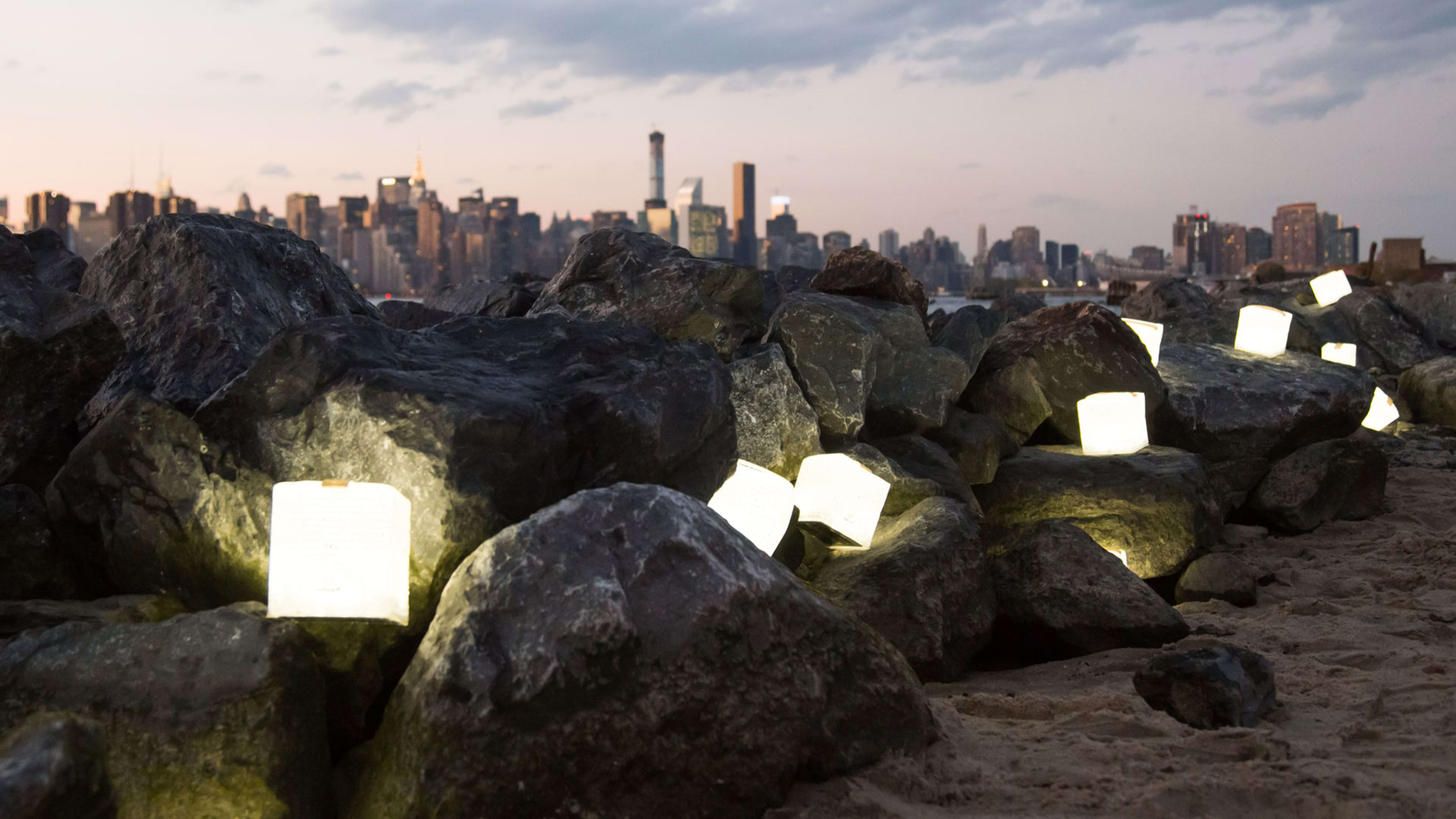When Syrian refugees leave their camps, they pack three items: food, water, and light.
The first two generally come in the form of packages from the United Nation’s World Food Program or other nonprofit organizations. The latter, however, traditionally came in the form of kerosene lamps, which are less than ideal. In fact, they’re often dangerous. According to the Word Health Organization, roughly 1.5 million people a year die from toxic kerosene fumes. In India, where the impoverished population heavily depends on kerosene, the lamps cause over 30,000 yearly house fires. In South Africa, 200,000 people are injured or lose property due to kerosene-related fires. Not to mention, kerosene users spend 30% of their income buying it.
“They can save that money for food, education, building homes,” explains Alice Min Soo Chun, founder and CEO of Solight Design, who created a unique alternative: a slim solar lantern.
The SolarPuff is a two-ounce, flat-pack solar lamp which quickly expands into a 4.5-inch cube. The lantern can last eight hours and easily recharges with clear sunlight. It provides enough light for refugees or people in impoverished areas to perform tasks at night, without instigating any dangerous fires or needing batteries. There are even different settings (high or low), and a blinking option to scare off wild animals or signal distress.
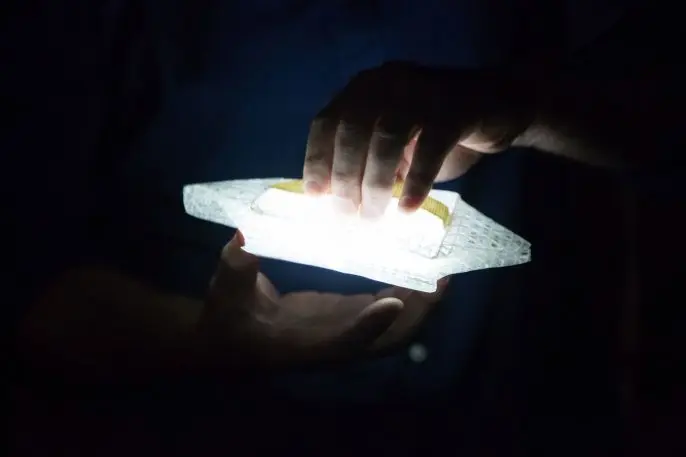
Chun explains how many Syrian refugees—often starving and sick—arrive by boat in the middle of night, at times when they cannot see where to land or how to safely disembark. They are handed lights by NGO volunteers to navigate the waters so they don’t crash into rocks. From there, they might need to walk up to 30 miles in the dark to arrive at a camp, where there are no lights. (Refugees without access to kerosene lamps often find themselves burning plastic trash, “which is even more toxic,” notes Chun). SolarPuff brightens the trek—and their new life.
“A lot of times the kids are suffering from trauma and they’re frightened, but when they’re handed the light, they perk up.” The popping element of the design, she explains, “gives them a sense of wonder.”
The SolarPuff has proven to be extremely useful in reducing camp crime, such as child kidnappings or sex trafficking. The small, nearly weightless design makes it easy to carry around (versus many other lamps, which are traditionally bulky and heavy.) Women, for example, use it go to the bathroom at night. On average in the past year, there was a 20% decrease in rape and sexual assault in camps, says Chun, since predators traditionally depend on darkness to execute their attacks. “With light, they can be identified,” says Chun.
With its sleek and cute size, Chun’s invention is also a best seller at design stores and museum shops around the country—making it simultaneously charitable and consumer-friendly. Ten percent of SolarPuff’s profits benefit refugees and people living in developing regions. As of July, Chun negotiated distribution for SolarPuffs in 25 countries and works with more than a dozen NGOs, including a refugee camp in Greece, an orphanage in Greece, and an organization helping stop sex traffickers in Nepal.
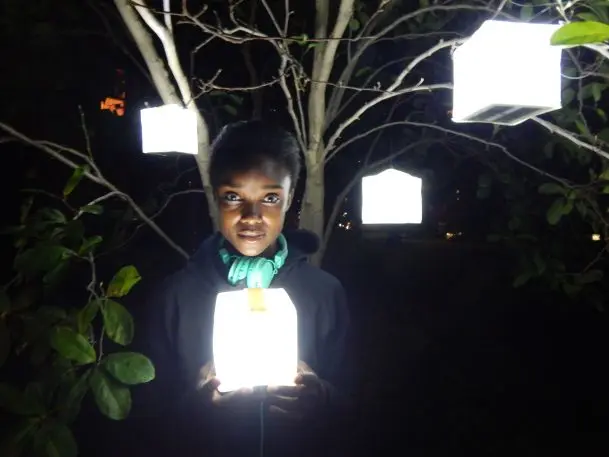
“It’s An Environmental Issue”
Chun has long since harbored philanthropist leanings. After studying architecture at the University of Pennsylvania, she started her own community outreach program for college students to design public projects in underprivileged neighborhoods. She knocked on local councilmen’s doors to collect money for park benches, playground planters, and community picnic areas.
That was not only the start of a lifelong passion for social good, but also of using the elements of design for effective problem-solving.
A love of design was instilled in Chun from a young age. She immigrated from Korea when she was just 4 years old. Her father was an architect and her mother was an artist who taught her how to sew. “That’s where the fascination with thin materials comes from,” explains Chun.
As a child, she learned origami, the art of paper folding, which would further propel an interest in design and serve her later in life. “It was always a hobby, but also inspiring because a blank page has the most potential to be anything, it just takes determined will,” says Chun of the craft.
Chun ultimately went on to become a professor of design and material culture at Parsons the New School for Design. Her inspiration for the SolarPuff wasn’t linear though, but rather a mishmash of events melded together.
One standout was her son being born with asthma, a diagnosis that plagues 25% of children in Manhattan—50% higher than the rest of the country, reports the CDC.
“It’s an environmental issue,” she says of asthma’s connection to air pollution from energy consumption. Chun cite studies of how humans gene pools are too early for such rapid change, which propelled her to take action in her own way. “A worried mom does better research than the FBI,” she says of how she delved into energy studies in an effort to contribute—in some way—to what she considers alarming environmental issues.
Chun’s research led her to solar panels (“solar energy is the most effective and efficient way of harnessing free energy,” she stresses), and because she was a material specialist while teaching at Columbia University, she was particularly interested in “trending” materials. “They’re getting thinner, faster, lighter, and smarter,” she said.
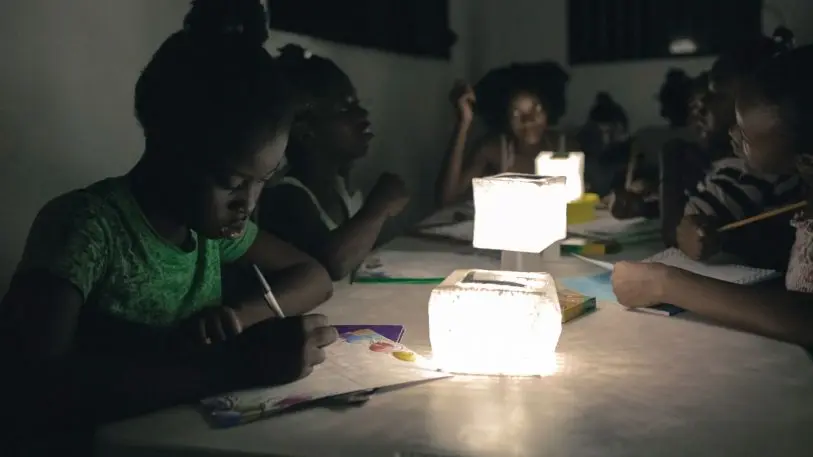
Putting Design To Good Use
Armed with her new knowledge, Chun began experimenting with solar panels, but with no clear direction where it would take her. One specific incident changed that: the 2010 Haiti earthquake that left 230,000 dead and 55,000 displaced.
Upon learning of the devastating news, Chun engaged her graduate students at Columbia University, where she served as adjunct assistant professor of architecture, in helping her shape a solar project to serve individuals in crisis. She turned her classroom into an innovation studio.
At first, the group came up with an inflatable solar light with a mouth nuzzle. The idea behind the prototype was that one could blow the item up, pop in a light, and see in the dark.
It was a start, but there were some issues. For one, the mouthpiece meant it would not be hygienic for groups of people to share in crowded areas. Also, the professor thought it did not meet her strict aesthetic standards.
“It didn’t really look like a lantern or a nice object that could sit on a table with dignity,” she says. “They were ugly, first ones are always ugly.”
Chun passionately holds that design matters in all areas of life. With help from her students, she continued to redesign the project, with various models and accessories, until she finally went back to her roots.
“I kept redesigning it until I used the principles of origami,” she explained of her childhood hobby’s surprising use.
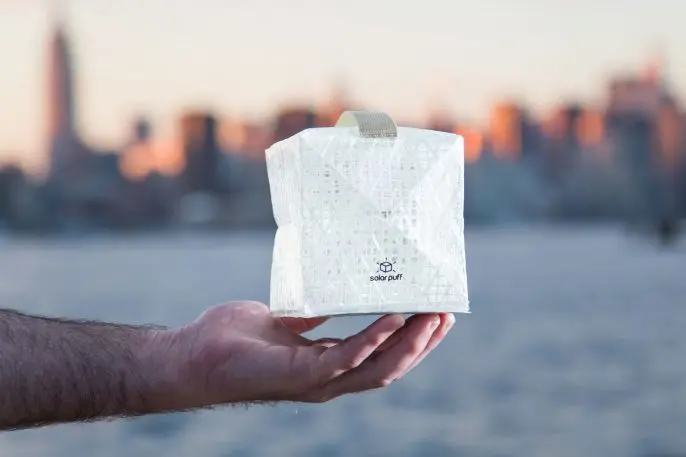
“You save enormous amounts of money for shipping, and you save space,” says Chun. For deliveries to Africa, for example, she notes how several competitors can’t scale because shipping costs are greater than the item’s cost itself.
With her students, Chun eventually founded a design-centric nonprofit called Studio Unite (which now receives 10% of every retail SolarPuff sold) that works in conjunction with her company, which she named Solight Design. In 2011, she began by field-testing her prototype in Haiti for a few years. Over 500 hand-made prototypes were sent to Haitian farmers in the central plains. Most of the recipients were women with children.
“When I first gave them the SolarPuffs, they started to sing and dance, saying this was a ‘gift from God,'” she says. “That’s when I knew I had to make this accessible to everyone.”
Despite the emotional significance she witnessed, Chun readily admits she wasn’t quite prepared for the rigors of a startup. She had been accustomed to the world of academia, with no real experience in running, let alone starting, a business.
“It’s very difficult being a single mom with three jobs,” she reflects, “and I didn’t know anything about being an entrepreneur… There were many times I could have given up but I didn’t because of my son.”
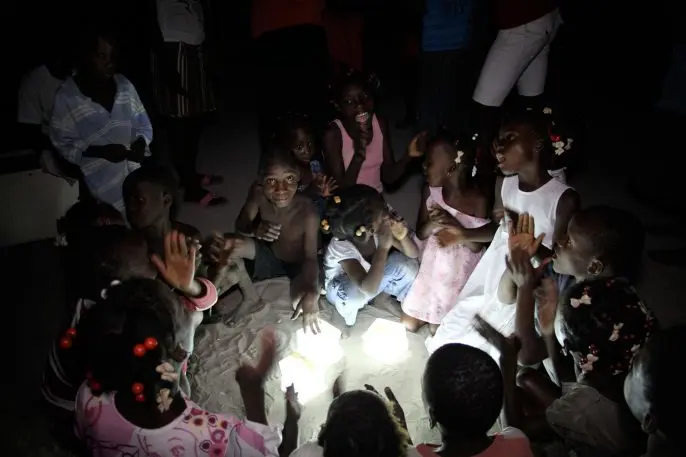
A Brighter, Cleaner Future
In 2015, after her manufacturable SolarPuff was ready for market, Chun started a Kickstarter campaign. The product’s mission statement to provide lights to those in need struck a chord: She raised $500,000 in 30 days, with over 6,800 backers.
There was a small profit the first year of her established company, but the startup only broke even in its second. She credits her success to her university background, which, above all else, taught her the importance of due diligence: “I research, research, research.”
What her former profession did not teach her though was the importance of business relationships—creating them as well as fostering them. By 2017, Solight Design established relationships with the United Nations, over two dozen countries, as well as 200 retail stores across the country that now carry the SolarPuff. You can find the solar cube in a Whole Foods market or in the MOMA design store, where it’s a bestseller. For NGOs and nonprofits, the Solar Puff is sold wholesale or in some cases, subsidized or free of charge.
Solight Design now employs 15 people part time and four full time. The plan is to expand in the coming year by pitching to investors and preparing for a Series A funding, as Chun has rather ambitious plans in the works. There’s more than just lanterns on the horizon.
“The real vision is I want to get everybody off the grid and stop using fossil fuels,” she says. To that end, the next project will be a home lighting system called XLight, which will have it’s own patented built-in battery phone charger.
As for the SolarPuff, imagine it in a much bigger, grander format: “Eventually I want to do a SolarPuff house that’s completely self-sustaining and off the grid and you’ll be able to sell your energy back to the grid.”
Till then, Chun continues to expand her lantern’s outreach, and even keeps tabs on the many refugees depending on her invention. She cites one young, female Yazidi refugee who arrived at a camp in Greece suffering from burns and hypothermia. After three months of healing at the camp, upon which she befriended Chun, the teen ultimately packed up her scarce belongings to find a more permanent home across European borders.
Chun didn’t hear from her in eight months. Finally, she received a note from her young friend. The refugee had arrived in Germany with only one belonging: her SolarPuff, which she photographed sitting on her new kitchen table.
“She made it there all by herself,” says Chun, “[With light], people are safer, they’re happier. It’s a symbol of hope.”
Recognize your brand’s excellence by applying to this year’s Brands That Matter Awards before the early-rate deadline, May 3.
